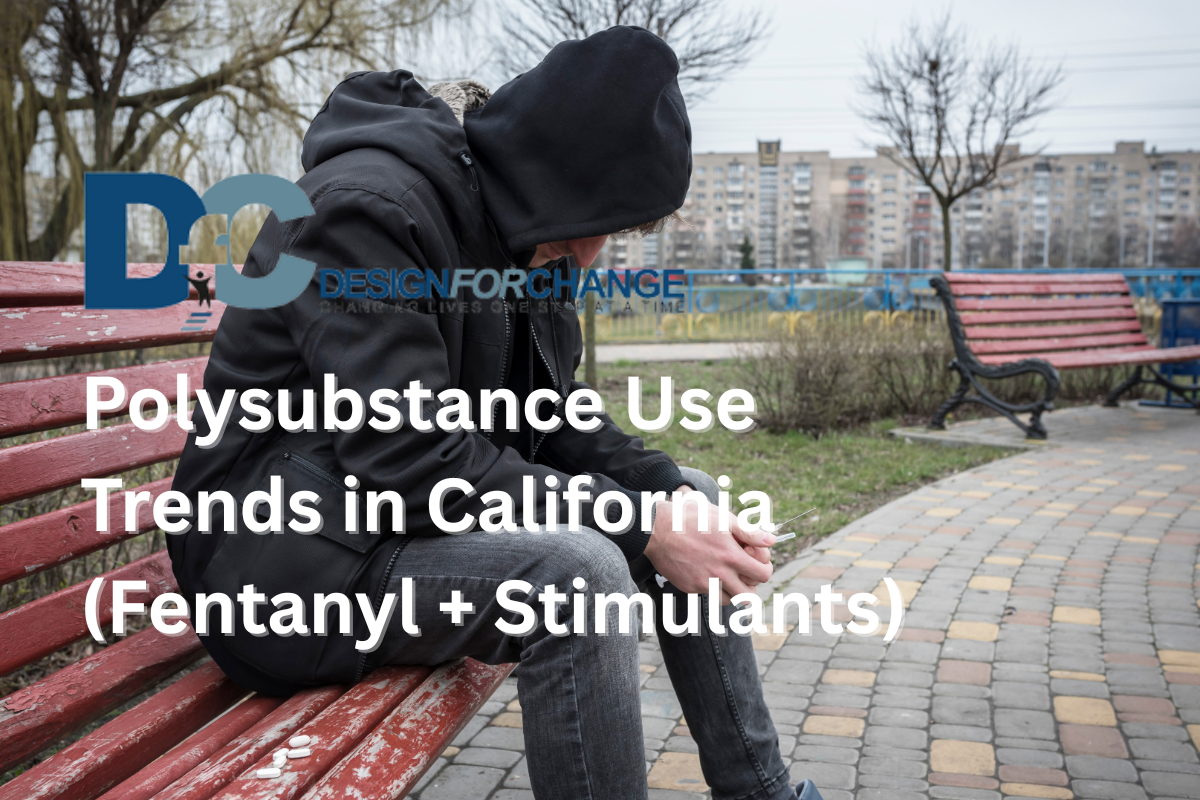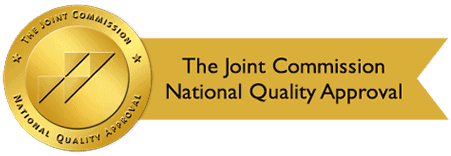By: Design for Change Recovery
Categories:
Polysubstance Use Trends in California (Fentanyl + Stimulants)
You are here:Polysubstance use—using more than one drug concurrently—is increasingly becoming the norm rather than the exception in the current overdose crisis. In particular, the combination of fentanyl and stimulants (methamphetamine, cocaine, prescription stimulants) has emerged as a leading driver of fatalities. This trend is part of what many researchers call the “fourth wave” of the opioid epidemic, where the old lines between opioid and stimulant use blur.
In California, this shift has serious implications: more complex overdoses, greater strain on healthcare systems, and increased need for integrated treatment and prevention strategies. In this post, we’ll unpack the data, risks, signs, and what’s being done — especially here in California.
The “Fourth Wave” of the Overdose Crisis: Fentanyl + Stimulants
Traditionally, the opioid crisis evolved in waves: prescription opioids, then heroin, then fentanyl. The newest wave is defined by polysubstance use, especially mixing fentanyl with stimulants. According to research:
- From 2010 to 2021, overdose deaths involving both fentanyl and stimulants surged from ~0.6% to ~32.3%. Wiley Online Library+1
- Researchers describe polysubstance use (opioids + stimulants) as “defining features” of the current overdose landscape. ScienceDirect
- The “Rise of Illicit Fentanyls, Stimulants and the Fourth Wave” paper outlines how combinations are more frequent, potent, and deadly. PMC
In short — it’s not just fentanyl or stimulants anymore. It’s fentanyl AND stimulants, and often with other substances.
U.S. & California Trends & Statistics
Nationwide Overdose Data
- A recent CDC report shows that from 2021 to mid-2024, 59.0% of overdose deaths involved stimulants; 43.1% co-involved stimulants and opioids. CDC
- The rate of overdose deaths involving stims rose dramatically from 2018 to 2023 (e.g. psychostimulants from 3.9 → 10.4 per 100,000) CDC
- The Pew Research Center reports that in 2021, ~32% of fatal overdoses now involved stimulants, up from <1% in 2010. Pew Charitable Trusts
California Data & Drug Use Surveys
- According to the California Department of Public Health (CDPH), in the period 2017–2021, misuse of prescription stimulants and heroin use were more common among younger adults; methamphetamine misuse is more prevalent among middle-aged adults (ages 36–55). CDPH
- The same CDPH report notes male respondents self-reporting some drug use more than female, and that polysubstance use trends are harder to capture in surveys, but likely underreported. CDPH
While direct CA overdose data for the fentanyl + stimulant combo is less publicly broken down, these national trends and the state’s known opioid/fentanyl crisis strongly suggest the same patterns are present in California.
Why People Mix Fentanyl + Stimulants
Intentional Co-Use
- Some users take stimulants to offset the sedative effects of fentanyl, trying to “balance” out the high.
- Others may use stimulants to stay awake, more alert, or function (especially those with demanding life circumstances).
- Some use combinations to chase a novel or stronger effect — euphoria from mixed pathways.
Unintentional Contamination / Adulteration
- Many stimulant supplies are now contaminated (or deliberately cut) with fentanyl, meaning users may ingest opioids unintentionally.
- What seems like “just cocaine” or “just meth” could already have fentanyl inside.
- This is part of the danger: many overdose deaths happen because the user didn’t even know an opioid was involved.
This dynamic has been documented in so-called “speedballing” mixtures (heroin + cocaine) and newer “super speedballs” — mixing fentanyl + stimulants. Wikipedia
Because fentanyl is so cheap and powerful, it’s become increasingly used as a cutting agent across drug classes.
Health Risks of Combining Fentanyl + Stimulants
Cardiovascular & Physiological Stress
- Stimulants push heart rate, blood pressure, and stress, while fentanyl depresses respiration. The push-pull effect strains the cardiovascular and respiratory systems.
- Over time, this can lead to cardiac events, arrhythmias, stroke, and other organ damage.
Overdose Risk
- The combination can mask early overdose signs — stimulant effects may “mask” how sedated someone is becoming until it’s too late.
- Naloxone can reverse the opioid component (fentanyl), but it does not reverse stimulant toxic effects (e.g. high heart rate, overheating).
- A mixed overdose may require multi-pronged medical intervention (supportive care, cooling, seizure management, etc.).
Mental Health / Neurological Damage
- Elevated risk of psychosis, paranoia, anxiety, hallucinations, especially with stimulant exposure.
- Cognitive impairment, mood disorders, memory problems from long-term use.
- Dual dependencies — treating one substance alone becomes complicated when multiple are in play.
Signs to Watch For (Behavioral, Physical, Mental)
Because polysubstance use layers multiple substance effects, the signs tend to be more complex:
Physical Signs
- Rapid fluctuations in energy / wakefulness vs. sedation
- Pupil changes (dilated, constricted, inconsistent)
- Cardiovascular symptoms (palpitations, chest pain)
- Sweating, overheating, tremors
- Respiratory depression episodes (slow breathing)
- Unexplained weight changes
- Paraphernalia from both stimulant and opioid modes (injection, smoking, pills)
Behavioral Signs
- Erratic sleep patterns (insomnia followed by “crash” periods)
- Mood swings, agitation, irritability
- Unpredictable behavior, impulsivity
- Financial strain, borrowing to support multiple drug use
- Secretive behavior, lying, hiding supply
- Using despite negative consequences in multiple life domains
Mental / Emotional Signs
- Heightened anxiety, paranoia, panic — especially when stimulants predominate
- Depressive crashes (after stimulant use)
- Cravings for both stimulant and opioid elements
- Confusion about period of interaction (which drug caused what)
- Denial, minimizing harm, ambivalence
These signs may overlap with what you’d see in stimulant use disorder or opioid use disorder separately — the difference is they often occur in the same person simultaneously or alternating cycles.
Implications for Treatment & Challenges
- Integrated & Dual Diagnosis Care
- Providers must treat stimulant use disorder and opioid use disorder together, acknowledging interactions.
- Many treatment programs are still siloed (opioid-focused or stimulant-focused), making gaps in care.
- Complex Withdrawal & Detox
- Opioid withdrawal protocols might not fully address stimulant withdrawal (which isn’t as well defined medically).
- Clients may need supportive care for stimulant-induced symptoms (sleep, mood regulation).
- Medical oversight is crucial to safety.
- Lack of Approved Medications for Stimulant Use Disorder
- Unlike opioid use disorder, stimulant use disorder lacks FDA-approved medications — behavioral therapies (e.g. contingency management) are mainstays. CDC+1
- Research is ongoing but limited. Some off-label use (e.g. bupropion, naltrexone combinations) has promise but is not standard.
- Treatment Retention Issues
- The fluctuating nature of stimulant highs/crashes can disrupt adherence.
- Polysubstance users often have more comorbid mental health or trauma history, complicating retention.
- Need for Harm Reduction
- Safe consumption education, drug checking, access to naloxone, supervised settings are more important.
- Treatment programs must adapt to manage overdose risk, not just abstinence.
Harm Reduction & Protective Strategies
- Drug checking / test strips / reagent kits — to detect fentanyl in stimulant products
- Always carry naloxone — in polysubstance use settings, it’s a lifesaver
- Never use alone; designate someone who can provide aid
- Use smaller test doses when trying unknown supply
- Avoid mixing depressants (benzos, alcohol) with the combo
- Linkage to care and peer support — early connection can mitigate escalation
- Education & outreach — for users, families, first responders
What’s Happening in California
- As fentanyl has surged in California, many overdose clusters now involve stimulant users who may have unknowingly taken fentanyl-laced stimulants.
- The state’s opioid crisis has been catastrophic: synthetic opioids, especially fentanyl, have driven sharp increases in overdose deaths. Wikipedia
- Programs in California are expanding naloxone access (e.g., through state initiatives) and harm reduction agencies are increasingly offering drug checking in some counties.
- California’s own self-report survey data (CHIS / CDPH) show notable use of stimulants, prescription misuse, and overlapping drug use trends. CDPH
These state-level shifts require local organizations (like Design for Change) to anticipate more co-occurring stimulant/opioid cases and build capacity accordingly.
If you or a loved one is using stimulants, opioids, or both, it’s crucial to recognize the increased risk and seek help early. Integrated care that addresses both sides of polysubstance use offers the best chance for stability and recovery.
We at Design for Change Recovery are here to help in Lancaster, California and beyond. We provide:
- Medical detox
- Residential & outpatient treatment
- Medication-assisted treatment when appropriate
- Aftercare, therapy, and support for dual diagnoses
Contact us to explore your options and verify your insurance today.
FAQ
Q: What is polysubstance use?
A: Use of two or more psychoactive substances (e.g. fentanyl + methamphetamine) at the same time or in sequence, intentionally or not.
Q: Why are stimulant + fentanyl overdoses more dangerous?
A: Because stimulants speed up heart and metabolism while fentanyl sedates breathing. The combination stresses body systems and often leads to delayed detection of overdose.
Q: Can naloxone help with polysubstance overdose?
A: Yes — it reverses the opioid component, but it doesn’t reverse stimulant effects. Medical help is still needed for stimulant-related complications.
Q: Are there medications for stimulant use disorder?
A: Currently, no FDA-approved meds specifically for stimulant addiction. Behavioral treatments like contingency management are the standard, and research into off-label options continues.
Q: How can I find treatment in California for co-occurring use?
A: Look for programs that handle dual diagnosis or integrated care (opioids + stimulants). Contact centers like Design for Change Recovery to ask about this capacity.


